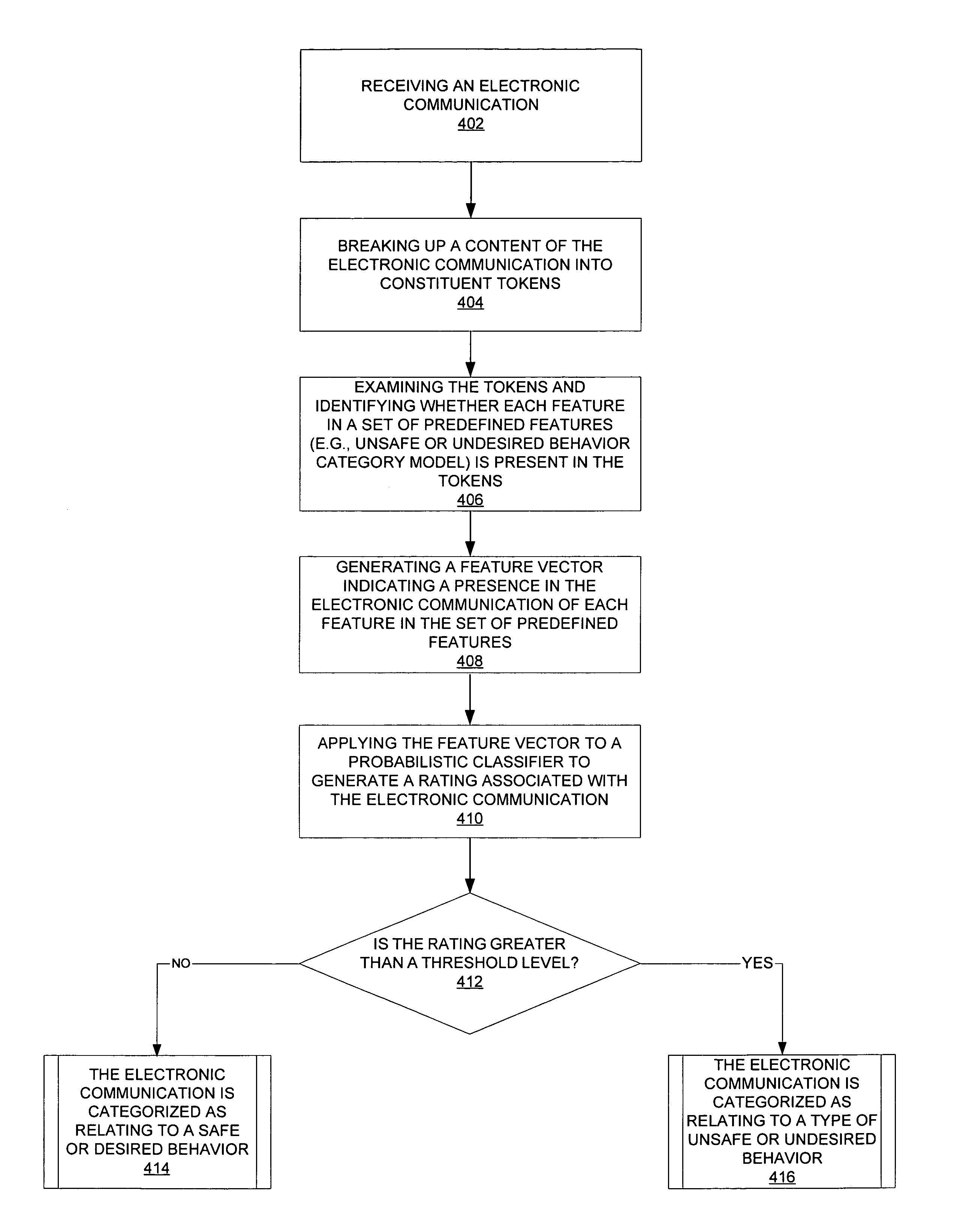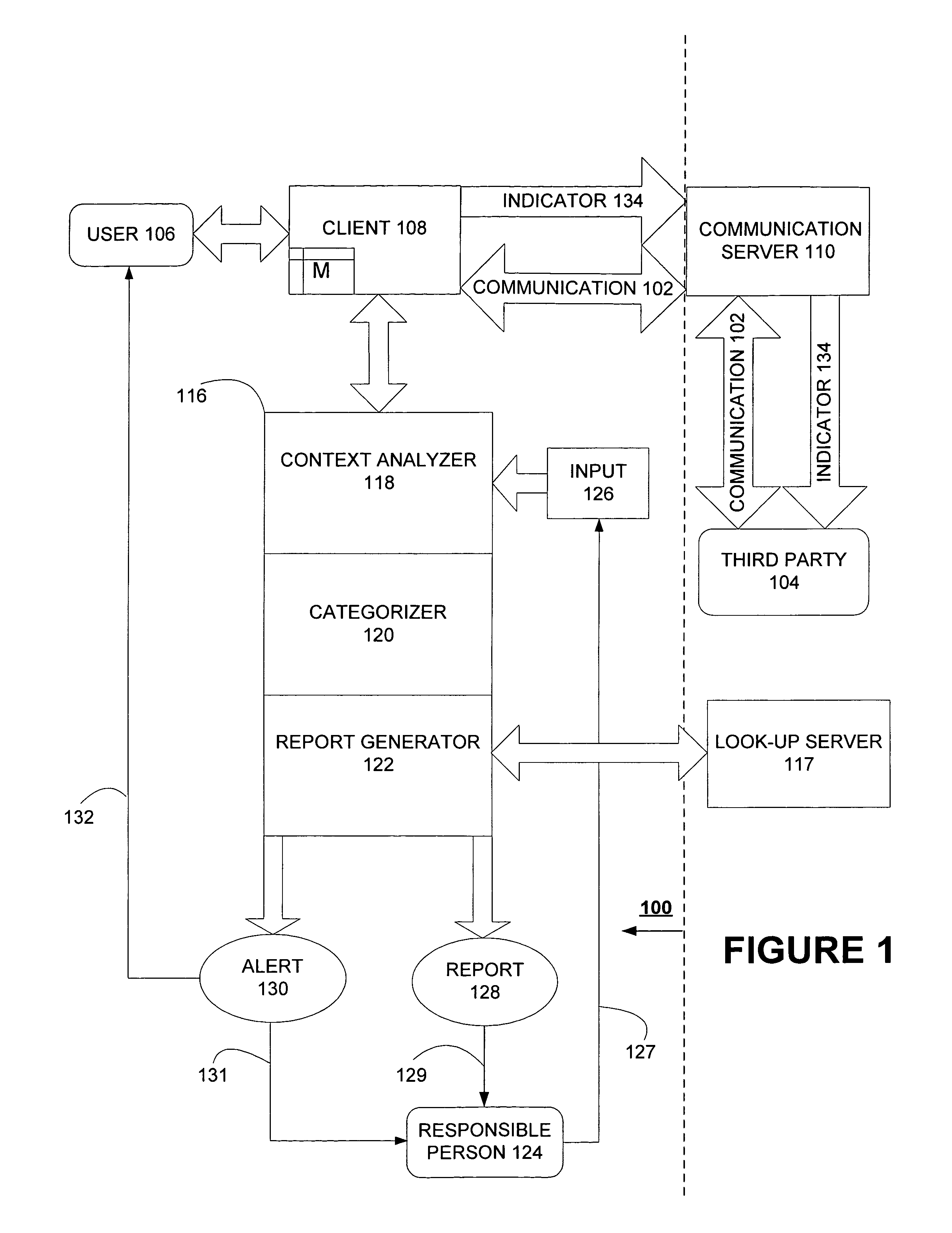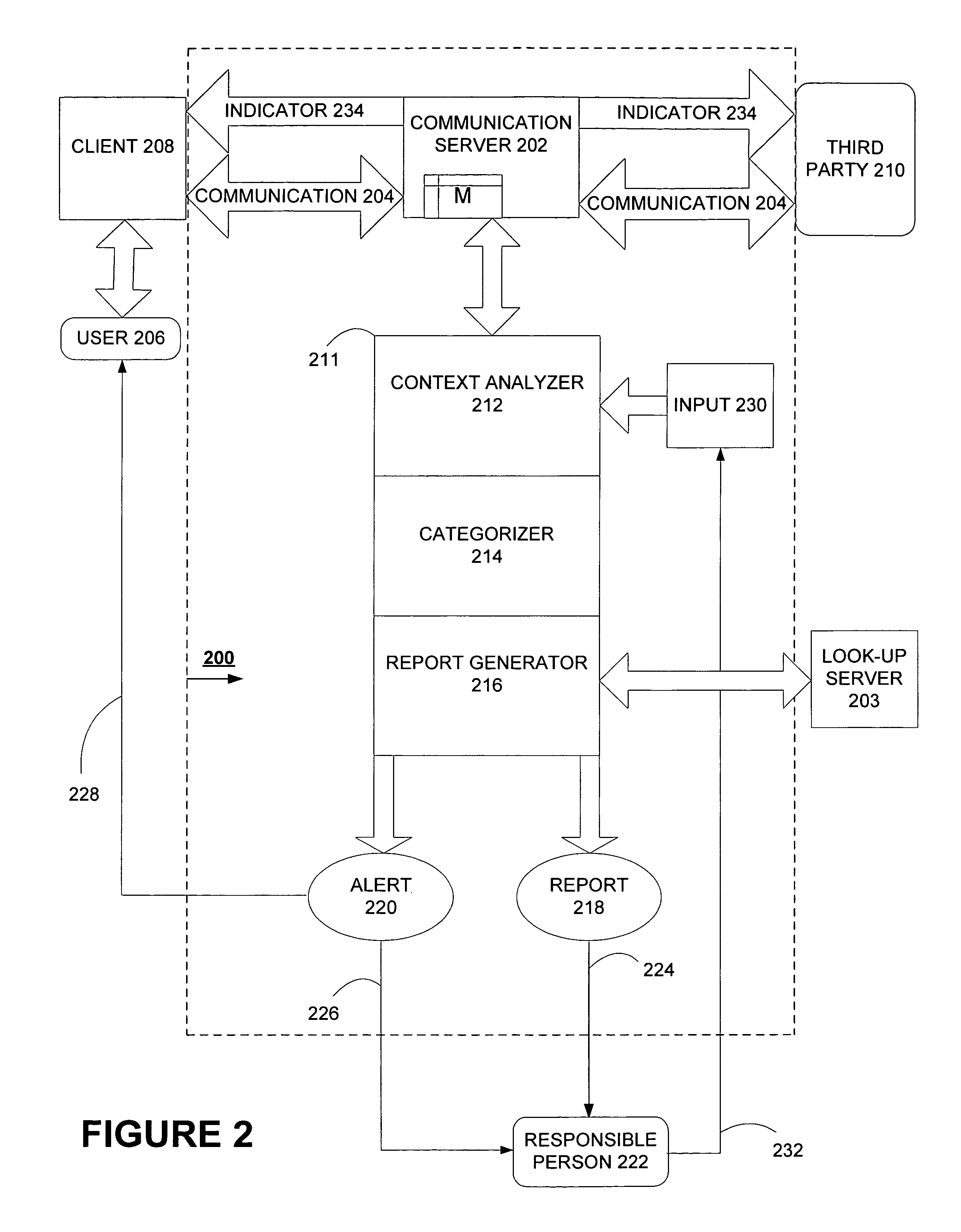Detecting sexually predatory content in an electronic communication
a technology of electronic communication and content detection, applied in the field of detecting electronic communication, can solve the problems of being targeted by criminals or abusive behavior, internet may provide a false sense of privacy and security, and potentially very dangerous for internet users, and achieve the effect of effective detection
- Summary
- Abstract
- Description
- Claims
- Application Information
AI Technical Summary
Benefits of technology
Problems solved by technology
Method used
Image
Examples
Embodiment Construction
[0023]FIG. 1 illustrates an exemplary embodiment of a client-based system 100 according to one embodiment of the invention. The exemplary embodiment of the system 100 is adapted to detect an electronic communication relating to an unsafe or undesired behavior. System 100 handles an electronic communication 102 such as an email, an instant messaging session, or a chat session communicated between a third party 104 and a user 106 (e.g., a minor) via a communication server 110 and over a data communications network. The user 106 may use a client 108 to send or receive the electronic communication 102. The third party 104 may be either a recipient or a source of electronic communication 102. In this embodiment of the invention, system 100 is illustrated as implemented on client 108 and detects whether electronic communication 102 relates to a type of unsafe or undesired behavior. Types of unsafe, undesired, or negative behavior can include sexual predatory behavior, bullying behavior, o...
PUM
 Login to View More
Login to View More Abstract
Description
Claims
Application Information
 Login to View More
Login to View More - R&D
- Intellectual Property
- Life Sciences
- Materials
- Tech Scout
- Unparalleled Data Quality
- Higher Quality Content
- 60% Fewer Hallucinations
Browse by: Latest US Patents, China's latest patents, Technical Efficacy Thesaurus, Application Domain, Technology Topic, Popular Technical Reports.
© 2025 PatSnap. All rights reserved.Legal|Privacy policy|Modern Slavery Act Transparency Statement|Sitemap|About US| Contact US: help@patsnap.com



